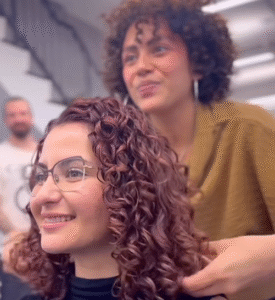For years, curly hair was misunderstood. Children were told to tame it, adults felt pressured to straighten it, and entire generations grew up believing curls were something to hide. Magazines, movies, and advertisements showcased smooth, straight strands as the gold standard of beauty, leaving textured hair in the shadows. What many didn’t realize was the damage this mindset caused—not just to the strands themselves, but to the confidence of those who wore them.
The curly hair transformation seen today is more than a trend. It’s a cultural shift, a movement toward authenticity and pride. Curls, coils, and waves are no longer being flattened or chemically forced into submission. They are being embraced, celebrated, and honored as natural crowns of individuality.
At the center of this transformation is understanding what curls truly need. Their spiral shape makes it harder for natural oils to travel down each strand, which is why curly hair often feels dry, frizzy, or fragile. Traditional shampoos designed for straight hair strip away even more moisture, leaving curls lifeless. The new approach focuses on hydration. Sulfate-free cleansers, rich conditioners, and weekly deep treatments help restore softness and elasticity. Natural oils like argan, coconut, and jojoba lock in moisture, giving curls the nourishment they were starved of for years.
Styling has also undergone a revolution. The tools that once damaged hair—scorching flat irons, blow dryers blasting at high heat, and harsh brushes—are no longer the norm. Instead, people are enhancing their natural curl patterns with finger-coiling, twist-outs, and plopping techniques that preserve definition. Diffusers are used gently to add volume without frizz, and new curl-focused gels and creams provide hold without stiffness. For the first time, styling has become about honoring texture, not erasing it.
What makes this shift so powerful is not just the products, but the community behind it. Social media has become a hub for curly-haired individuals to share their journeys, document their progress, and offer encouragement. Before-and-after photos reveal more than shinier spirals—they show people reclaiming confidence, smiling more boldly, and feeling beautiful in their natural state. For children growing up now, representation means everything. Seeing curls proudly worn in classrooms, offices, and even on red carpets tells them their hair is not just acceptable—it’s extraordinary.
The impact of embracing curls extends far beyond beauty. It is deeply emotional. People who once dreaded humidity now welcome it. Those who spent hours straightening their hair every week now spend that time caring for and celebrating their natural texture. Parents are teaching their children to cherish their curls from the start, breaking a cycle of shame that stretched across generations. Adults who hid behind straight styles for years often describe embracing their curls as liberating, even healing.
The curly hair transformation is proof that beauty standards are never permanent—they can evolve. Curls are not a flaw to be corrected, but a gift to be nurtured. They are versatile, expressive, and unique. They carry culture, history, and personality in every coil and spiral.
When cared for with patience and worn with pride, curly hair becomes more than just hair. It becomes a crown—a radiant symbol of authenticity, confidence, and resilience. And as more people embrace their curls around the world, they remind us all that true beauty lies not in conformity, but in celebrating exactly who we are.


